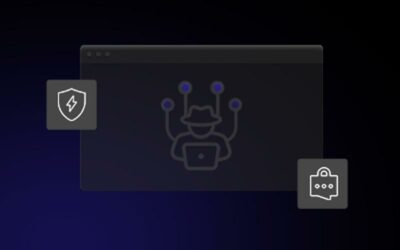The cybersecurity industry is constantly evolving. With attackers and security constantly playing cat and mouse, it’s important to have the latest countermeasures in place. Being able to add machines in a smart, secure way to the network and being able to adopt software quickly is essential to constantly growing networks of scale.
So what are the latest, greatest methods for securing data on networks?
COMPARTMENTALIZATION
The concept of network segmentation isn’t anything new. Ships use this concept to limit water leaks from spreading in the event the hull is breached in one area. Ideally, the one damaged area can be taken offline and repaired while the other remaining segments can continue.
Segmenting a network can be done pretty easily, but should be done with management software that can keep track of all the separate segments. If part of the network becomes compromised, an automated system can wall that network segment off from the rest before any malicious activity spreads to more of the network.
AIR GAPS
A network that isn’t connected to other networks is considered to have an “air gap”. Simply put, if very sensitive data is stored on a computer, that computer can be taken physically offline by unplugging it from the network.
This is a simple, yet effective way to secure data that can be offline. The downside is that the computer can’t be accessed by anyone without physically tending to it. This computer is an island and acts like a safe. Now the only way to breach it is by plugging in a thumb drive or some other means of directly attaching to it.
ZERO TRUST NETWORK ACCESS
The concept of zero trust is to treat every user within a network as if they could be a threat. Authentication and other verification measures are put in place at different stages throughout the network.
When companies adopt a zero-trust network approach, they will have the security team teach all the employees how to properly log in to their terminals. The new system will require them to use usernames and passwords, and possibly biometrics. The behavior of employees is constantly tracked, and employees need to be made aware of this.
Companies that eventually adopt zero-trust architectures in their security are usually overhauling an out-of-date security system. Most companies don’t start with zero-trust approaches because it is disparaging to new employees and requires extra steps to log in each time they access the networks. It usually isn’t until the company grows and begins to collect important data on its clients that it looks for stronger security measures.
VIRTUAL TERMINALS
A virtual terminal, or VDI for virtual desktop infrastructure, is a terminal that has no local data storage other than the volatile memory and processor cache. The terminal is made to mimic a workstation with a familiar desktop, but it is just streaming that connection from a server in the cloud.
With all of the data residing on the cloud where it can be secured behind huge server clusters and secure data centers, there are no vulnerabilities in the local workstation itself. Since it doesn’t store data on its hard drive locally, the virtual terminal holds nothing that could be stolen or compromised.
Many larger companies use this approach for their users who can use virtual terminals just as seamlessly as they use a regular computer. However, this isn’t always suitable for every worker. Many employees still rely on traditional computers that store data locally.
SOFTWARE-DEFINED PERIMETERS
This concept is simply adding software checkpoints in the network that could do various things in the way of security. Typically, this involves a username and password approach for all users on the network, plus biometrics or two-factor authentication with a text message or email.
By creating custom software perimeters, the network administrator can set traps and sensors that will alert administrators if a breach occurs. The software can be designed to trigger alarms, or shut off computers remotely.
Cybersecurity is evolving every day. Today’s best approach to securing your company’s network might not work at all tomorrow. Companies are spending more money than ever before to defend the precious data on their networks. What is the best method to defend your network?



